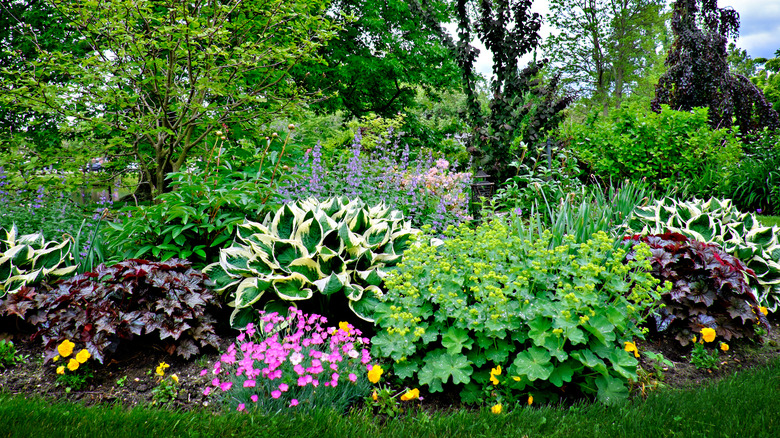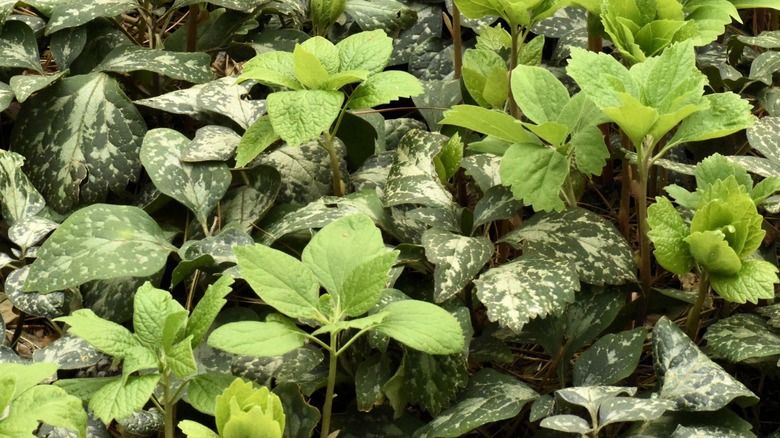The Drought-Resistant Native Spurge You Should Be Planting For Ground Cover
Groundcover plants serve a variety of uses — they suppress weeds, stabilize soil in the face of erosion, and enshroud parts of your yard with a lush, live carpet. Alas, many ground covers are fast-spreading and invasive. This unfortunate quality means that you'll struggle to control their growth and protect other garden plants from their aggressive roots. If you're looking for a ground cover species that won't wreak havoc on your garden, look no further than the Allegheny spurge (Pachysandra procumbens). This native plant is not invasive, featuring a slow-to-moderate rate of growth — mature plants rarely spread too much beyond a foot and stay below 10 inches in height. As an added benefit, pachysandras tolerate droughts and shade really well, so you can use this ground cover plant instead of grass in shady or dry spots. Even with minimal maintenance, expect this spurge species to live for about two decades.
Allegheny spurge is a creeping herbaceous plant that originates from the southeast regions of North America and is particularly prevalent in the Appalachian mountains. In zones 7 and up, this plant is deciduous. Meanwhile, in zone 6 and south, it's an evergreen. In some locations, like North Carolina, Pachysandra procumbens is considered an endangered species, so growing it at home is a meaningful contribution to conservation efforts.
Apart from helping this species bounce back in numbers, planting it on your property offers an excellent way to add a touch of visual interest. This spurge has ornate, oval-shaped leaves, with a bluish-green color and toothed edges. This spurge blooms in the spring, adorning your yard with aromatic white or pink flowers, which give way to small fruit.
How to plant and care for the Allegheny spurge
There are a few factors to consider when choosing the ideal location. As a slow-growing plant, the Allegheny spurge will stay in place for years instead of spreading. So, situating this groundcover between other plants in your yard is always an option — it will not encroach or compete with nearby ornamentals for nutrients and sun. That said, note that Pachysandra procumbens is a ground cover plant that loves shade, and is particularly content when you grow it under the cover of trees or bushes. It will withstand two to six hours of sun daily, but too much direct light and heat can stunt its leaves' growth and burn them. Soil type doesn't matter too much, and the spurge will happily grow in clay, sand, or loamy soils. If you want this species to spread as quickly as possible, plant it in a nutrient-rich, moist, but well-draining growing medium.
After finding the most suitable spot for your pachysandras, plant them about 6 inches to a foot apart. Once your plantings are in the soil, the maintenance requirements are hardly onerous. You'll need to water the young plants generously every week or two, and prune dead branches or those showing signs of senescence. In colder regions, it's a good idea to protect your pachysandras from bitter winter cold by covering them with a mulch layer. Don't worry about pests or diseases too much, as Allegheny spurge isn't seriously vulnerable to any.

